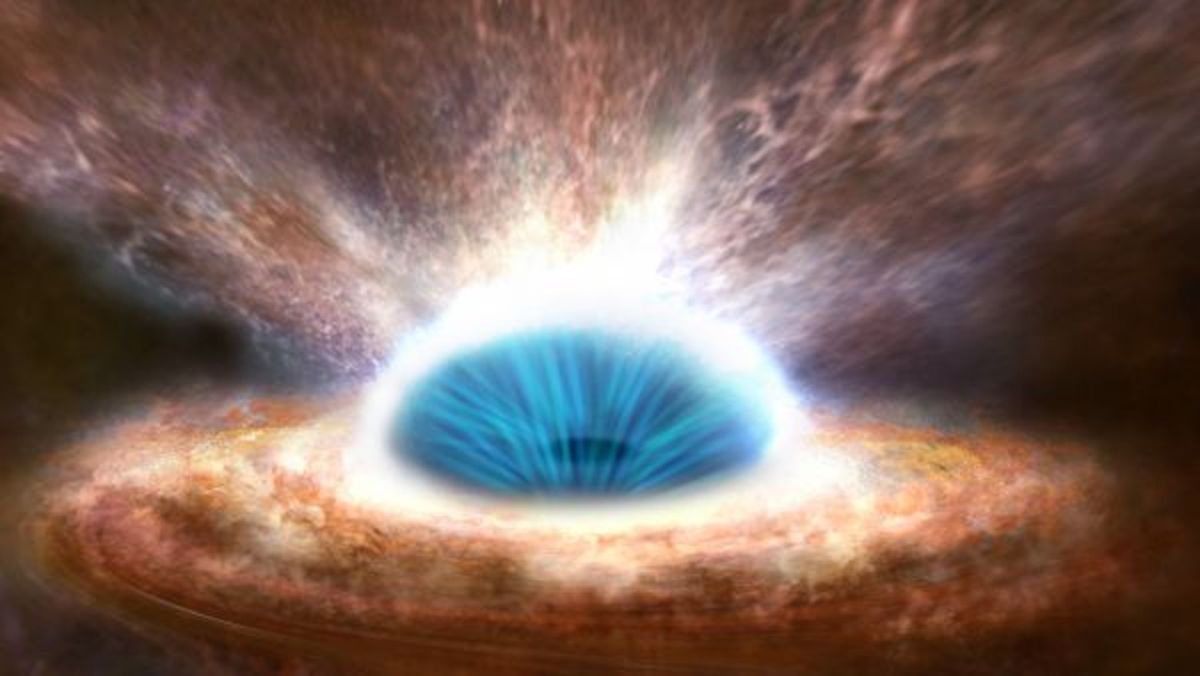Scientists have substantiated the existence of objects called topological solitons. The analysis shows that the light next to them should behave the same as it does next to black holes. Therefore, it is quite possible that we have misunderstood the nature of some of the objects that we observe.

Problem of black holes
In a study recently published in Physical Review D, scientists have suggested that some objects in space that we perceive as black holes may not be them at all. In their opinion, these may be topological solitons.
The existence of black holes is provided for by Einstein’s general theory of relativity. In the center of each of them should be a physical singularity created by the forces of gravity. This extremely large mass is concentrated in an extremely small volume. It has two main features: an event horizon and infinite density.
With the event horizon, everything is relatively clear — this is the area of space around the singularity in which the force of gravity is so strong that nothing can escape from them. But as for infinite density, no one can say how this can be and whether it is possible at all. Therefore, some scientists agree that another feature of the physical singularity is the complete destruction of the laws of physics familiar to us, while others are looking for an alternative to it.
Quantum gravity
The problem is that in order to build an alternative theory to the physical singularity, it is necessary to understand how gravity works on extremely small scales of space, such as the size of an atomic nucleus. For this, it is necessary to quantify it, that is, to explain how it is transmitted through the interaction of elementary particles, and no one knows this yet.
One of the theories that can potentially explain all this is string theory. It proclaims that all the elementary particles that we observe are actually extremely thin strings that vibrate, and it is these vibrations that generate all four elementary interactions.
And for this, the strings need to vibrate not in one plane, and even not in all three. The number of dimensions in the Universe, according to this theory, can reach up to 11. It’s just that most of them are rolled up on minimal scales, compared to which even the size of an atom is gigantic.
Topological solitons
In a new study, scientists have suggested that in fact these collapsed dimensions, in which string particles vibrate, cannot actually be completely hidden. And under certain conditions, they can lead to the formation of irregularities in space-time, which are known as topological solitons.
One of their fundamental features is the behavior of light near them. Modeling has shown that it does not penetrate through them and is not reflected, forming rings extremely similar to those that we observe with the help of the Event Horizon Telescope.
At first glance, the difference between topological solitons and black holes is insignificant. But this is so only if you look at them from a great distance. If we flew closer to them, we would be convinced that the first ones lack one of the most important features of black holes — the event horizon. Light and matter do not fall into them forever, but only bend around. And they don’t have a point of infinite density.
Therefore, it is quite possible that some objects that we know as black holes are actually topological solitons. And it can actually change our whole understanding of how the cosmos works. But they are all too far away from us to be sure of what they really are.
According to www.space.com
Follow us on Twitter to get the most interesting space news in time
https://twitter.com/ust_magazine

